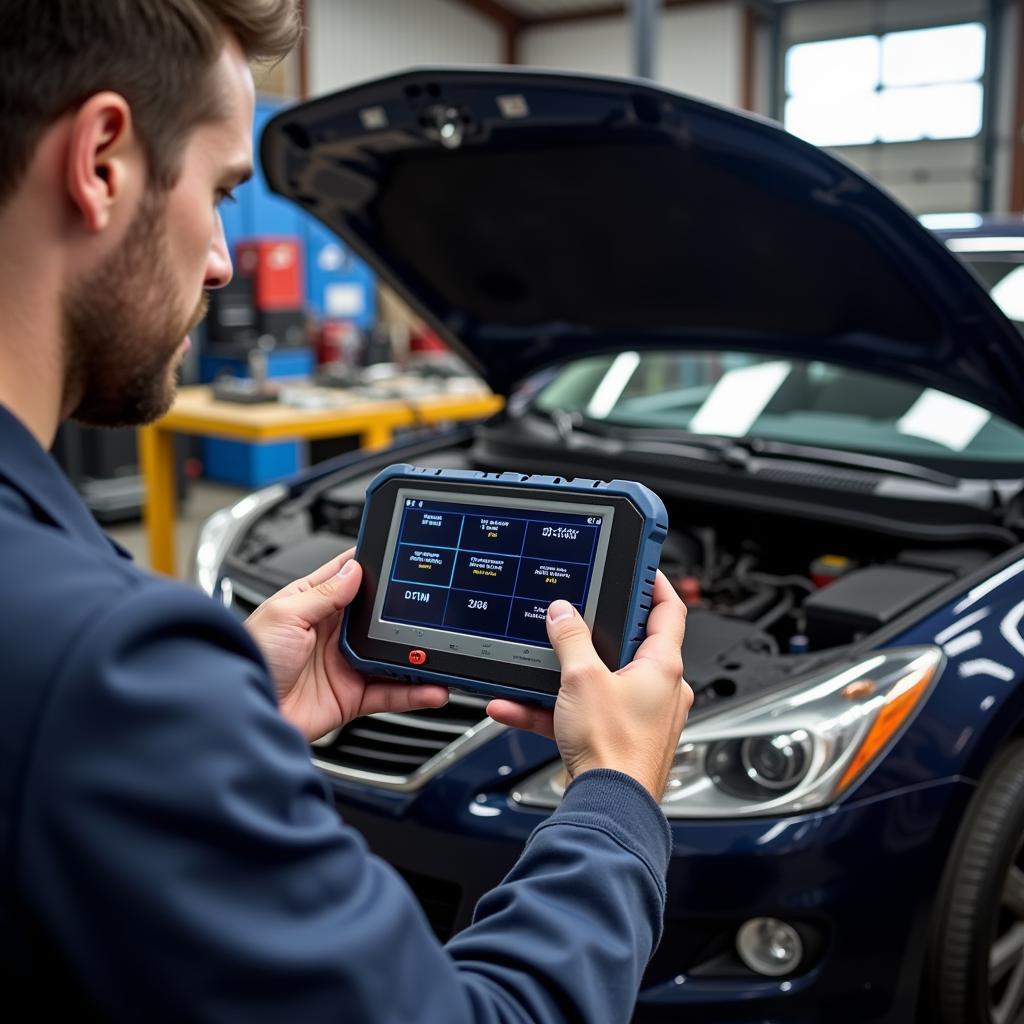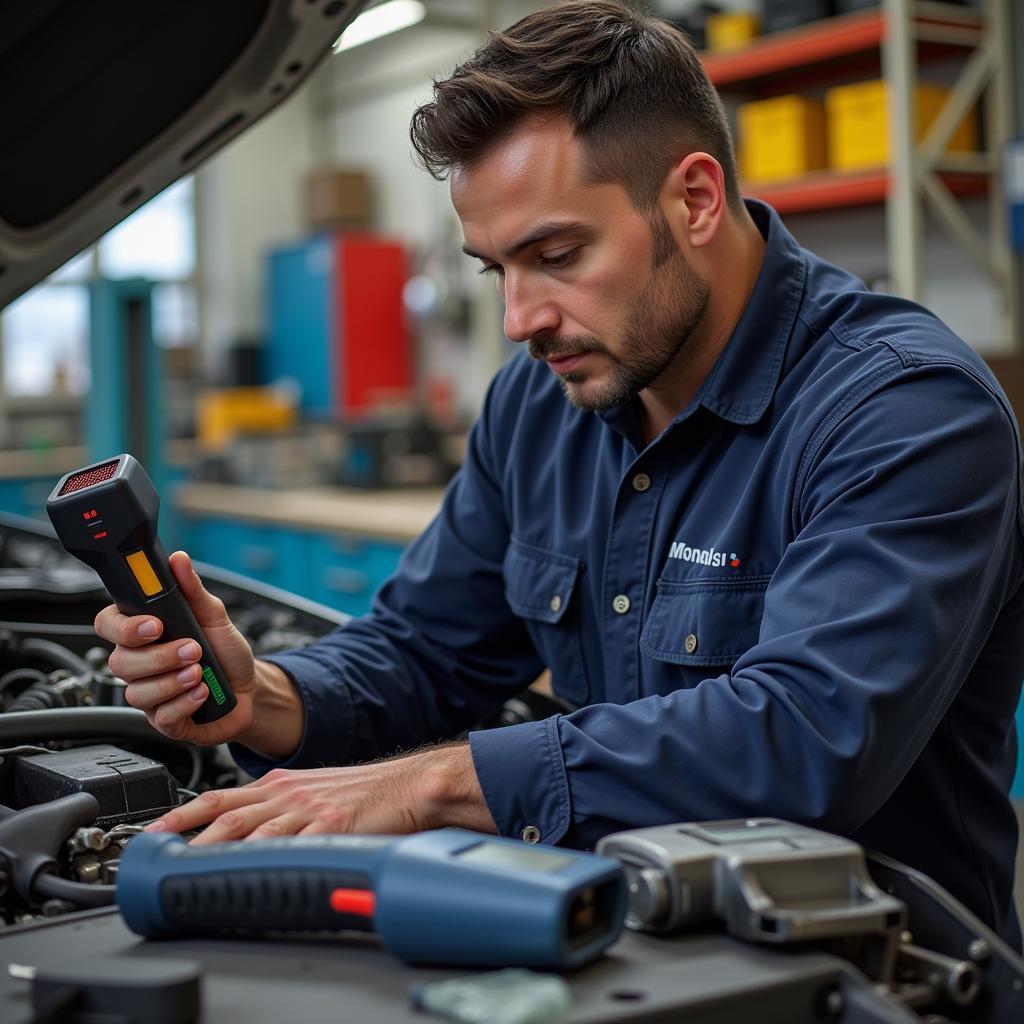Diagnostics tools are no longer a luxury but a necessity in automotive repair. Today’s vehicles are complex, interconnected systems relying heavily on electronic control units (ECUs). Without the right Diagnostics Tools In Automotive, pinpointing the root cause of a problem can be like searching for a needle in a haystack.
Similar to a configuration monitoring and diagnostics tool, automotive diagnostic tools empower mechanics and car owners to delve into the vehicle’s electronic systems, retrieve vital data, and identify malfunctions quickly and accurately. This article explores the essential aspects of diagnostics tools in the automotive world, providing valuable insights into their functionalities, benefits, and selection criteria.
Why are Diagnostics Tools in Automotive so Crucial?
The automotive landscape has transformed dramatically. Gone are the days of simple mechanical systems. Modern vehicles are sophisticated machines, controlled by a network of ECUs governing everything from engine performance and transmission shifting to safety features and comfort systems. When an issue arises, simply relying on visual inspection or guesswork is insufficient and often leads to wasted time and unnecessary repairs. Diagnostics tools in automotive bridge this gap, enabling technicians to access real-time data, error codes, and system performance indicators. This precise information is invaluable for accurate diagnosis and effective repair strategies.
What diagnostic tools do mechanics use? Mechanics rely on a range of tools, from basic code readers to advanced scan tools and specialized software that interface with the vehicle’s computer systems.
 Automotive Diagnostic Tools in Action
Automotive Diagnostic Tools in Action
Types of Diagnostics Tools in Automotive
Diagnostics tools in automotive vary in complexity and functionality. They cater to different needs and skill levels, from DIY enthusiasts to professional technicians. Here’s a breakdown of common types:
Code Readers:
These entry-level tools primarily read and clear Diagnostic Trouble Codes (DTCs). They are affordable and suitable for basic troubleshooting.
Scan Tools:
More advanced than code readers, scan tools offer deeper insights into the vehicle’s systems. They can access live data streams, perform actuator tests, and provide bi-directional control.
Oscilloscopes:
These tools analyze electrical signals and waveforms, helping diagnose complex electrical issues that might be missed by other tools.
Pressure Gauges and Vacuum Testers:
These tools are essential for diagnosing mechanical problems related to fuel pressure, vacuum leaks, and other related issues.
Specialized Software:
This software provides access to manufacturer-specific data and functionalities, enabling in-depth diagnostics and programming.
Just as a diagnostic tool samsung can pinpoint issues within a specific device, automotive diagnostic tools offer targeted analysis for different vehicle makes and models. This specificity is crucial for accurately diagnosing and resolving problems unique to each system.
Choosing the Right Diagnostics Tools in Automotive
Selecting the appropriate diagnostic tools depends on several factors, including your skill level, the type of vehicles you work on, and your budget.
What are the most common diagnostic tools? Code readers and scan tools are the most commonly used diagnostic tools in automotive, providing a good balance of functionality and affordability.
Do I need a professional diagnostic tool? While basic code readers are suitable for DIY enthusiasts, professional mechanics require more advanced tools like scan tools and specialized software to handle complex repairs and diagnostics.
How to use automotive diagnostic tools effectively? Familiarize yourself with the tool’s interface and functionalities, follow the manufacturer’s instructions, and interpret the data accurately to diagnose and resolve issues effectively. Remember, a macbook diagnostics tools requires a different approach compared to automotive tools. Understanding these nuances is essential for effective troubleshooting.
 Mechanic Selecting a Diagnostic Tool
Mechanic Selecting a Diagnostic Tool
Future Trends in Automotive Diagnostics
The field of diagnostics tools in automotive is constantly evolving. With the rise of electric vehicles (EVs) and autonomous driving technologies, new diagnostic tools and techniques are emerging to address the unique challenges these systems present. Staying abreast of these developments is crucial for any automotive professional.
If you’re seeking a robust diagnostic solution, the iste diagnostic tool offers some parallels to automotive tools in terms of its focus on identifying and resolving technical issues within a specific domain. Similar to developers using vs2017 diagnostics tools, automotive technicians are relying increasingly on sophisticated software and hardware for accurate and efficient diagnostics.
Conclusion
Diagnostics tools in automotive are indispensable for efficient and accurate vehicle repair. From simple code readers to advanced scan tools and specialized software, these tools empower mechanics and car owners to tackle complex issues with confidence. Choosing the right tools and staying informed about the latest advancements will ensure you are well-equipped to handle the challenges of modern vehicle diagnostics.
For personalized guidance on selecting the perfect diagnostic tool for your needs, connect with ScanToolUS at +1 (641) 206-8880 or visit our office at 1615 S Laramie Ave, Cicero, IL 60804, USA. We’re here to help you navigate the world of automotive diagnostics.
